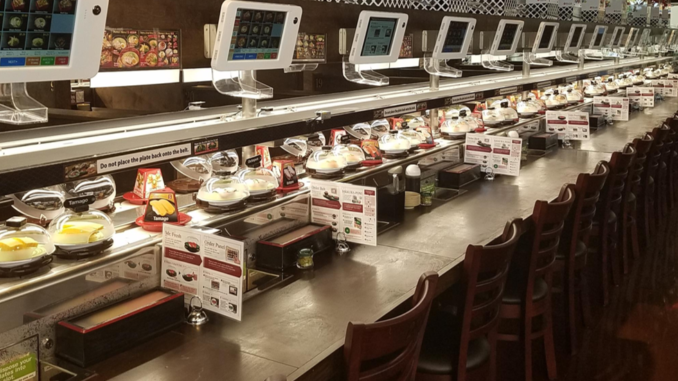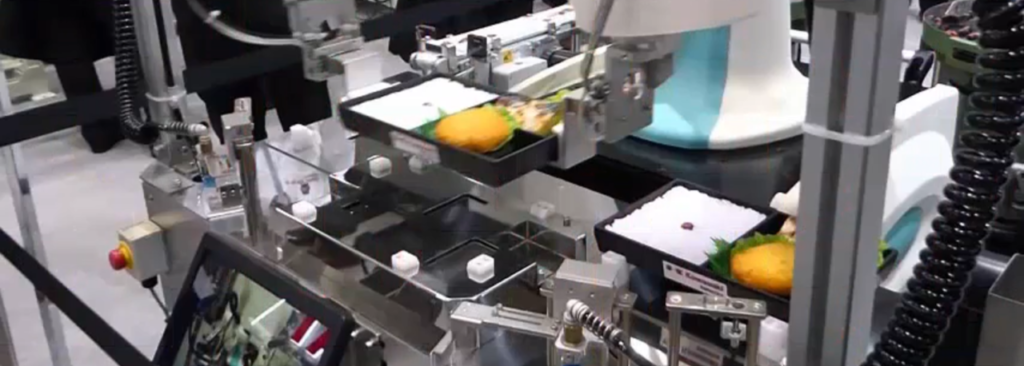
By Alisha Goldberg - 7.17.2019
Kura Sushi USA is planning an initial public offering, the company revealed earlier this month in a federal securities filing. That may not seem like big news until one considers that it will be the first traditional IPO in the restaurant industry in more than four years.
What’s more, Kura Sushi is anything but a traditional restaurant brand, let alone a traditional sushi chain. Since its inception 37 years ago by a small businessman selling rice vinegar to sushi restaurants in western Japan, the company has shown an unwavering commitment to technology innovation with the goal of improving operational efficiencies and the quality of the guest experience.
Technology has been the backbone of virtually every aspect of the company since its start. And technology continues to set it apart and allow it to succeed — to the point that parent company Kura Japan now operates more than 400 stores worldwide with a market value of more than $1.5 billion.

While many regard sushi-making as a fine artisan craft, as depicted in the 2011 movie “Jiro Dreams of Sushi,” Kura Sushi has succeeded by turning such sentiments upside down. Instead of seasoned sushi chefs making sushi and rolls by hand as their forebears had done since time immemorial, for example, the restaurant chain deploys an army of metallic kitchen robots capable of producing the food on demand in record time and with mechanical precision. Some machines make rolls. Other machines make sushi. One machine squirts wasabi paste onto perfectly-formed and measured rice balls.
As customers enter the restaurant, they sign in using a touchscreen that also displays the wait time. They receive a text message when their table is ready. At the table, domed dishes roll down an order lane onto a revolving conveyor belt that then delivers the dishes to the same customers who placed the orders via a touchscreen panel. Having consumed the contents, guests drop their empty plates into a slot at their table. From there the plates zoom to the dishwasher to be automatically loaded and cleaned. The cost of each item is automatically tabulated and billed to the right customer account.
Kura Sushi owns 31 patents for technology inventions it has made over the years developing its sophisticated system of automated food ordering, preparation, delivery, and billing. Perhaps its most valuable patent relates to its transparent dome-shaped dish cover, called sendo-kun, or “Mr. Fresh.” The dome, placed on top of each plate, flips open when the plate is slightly lifted. Importantly, it contains an embedded chip that enables the monitoring system to track how long a plate has been making the rounds on the secondary conveyor belt where anyone can help themselves to any dish.

Given this advanced level of automation, Kura Sushi hires very few chefs and very few servers. The cost savings in overhead compared to traditional restaurants is obvious. Additional technology, such as RFID readers and food replenishment algorithms, reduce labor costs and food waste even further.
It’s no wonder Japan now has thousands of copycat restaurants, most of which use sushi preparation robots made by Suzumo Machinery Company, with plates that travel on conveyor belts, accurately delivering dishes to the customers who ordered them via touchscreen panels. “Conveyor belt sushi” is now a $6 billion industry in Japan alone.
Kura Sushi deploys multiple technology systems on the backend, including one that combines real-time data with information about how many food items were consumed during comparable time frames in the past, allowing production adjustments to be made as needed. The chain also uses a remote assistance system with cameras that relay images to remote human supervisors who can then advise locations immediately on whether the conveyor belts are carrying the right quantity and assortment of offerings.
Kura Sushi USA, the U.S. subsidiary of Kura Japan, was established in 2008 and currently has 21 locations in California, Texas, Georgia and Illinois, with plans to grow to 300 or more locations across the country over the next several years. Propelled by end-to-end technology, and with the infusion of $58 million it plans to raise with the initial public offering, the goal should be within chopstick reach.

